Preparation
– Dishwashing liquid
– 1 bunch of steel wool (the type used for scrubbing pots)
– 1 sponge (or soft dishwashing scrub)
– 1/3 cup canola oil (you can choose another type of oil with a high smoke point) + 2 tablespoons of canola oil
– 250g of pork belly, with skin removed
– 1 pair of tongs
– 1 paper towel

Instructions:
Rinse the new pan with water, then add dishwashing liquid and scrub the inside and outside with warm water using the steel wool.
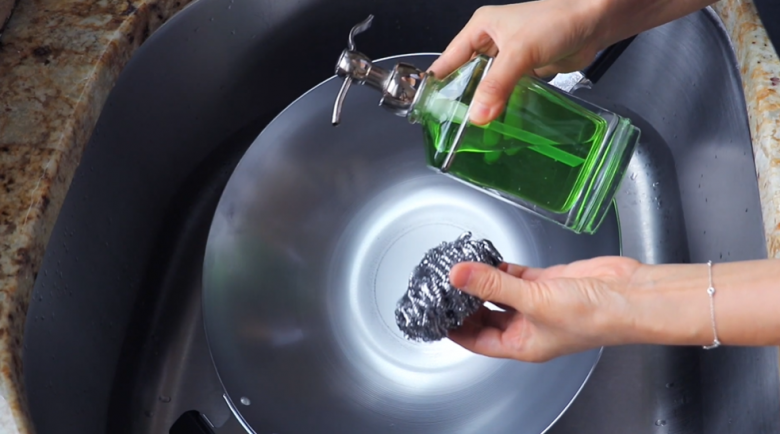
(All new cast iron pans, including carbon steel and lightweight cast iron pans, have a protective layer that needs to be completely removed before use.) After scrubbing, thoroughly rinse the pan with warm water.

Then, place the pan on high heat and let it smoke and change color, which should take about 10 minutes.

Move the pan back and forth to distribute the heat evenly. (At this point, you may want to open the windows and doors in your kitchen as the pan will emit some unpleasant odors.) Then turn off the heat.
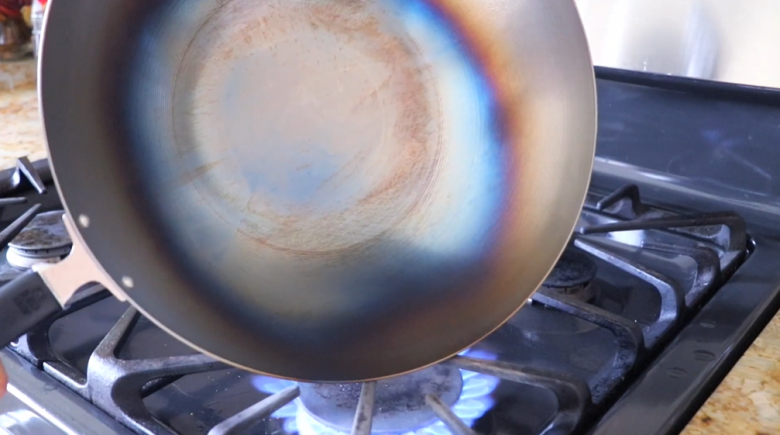
Carefully pour in 1/4 cup of canola oil (you can also use another type of oil with a high smoke point).

Using tongs, hold the pork belly and move it around the pan for about 30 minutes. You can reduce the heat if there’s too much smoke, or even turn off the heat and continue moving the pork belly. When the pan cools down, turn the heat back on. Generally, the total time for this step is 30 minutes. You can also use only pork belly without canola oil, but this process will take an additional 20 minutes.
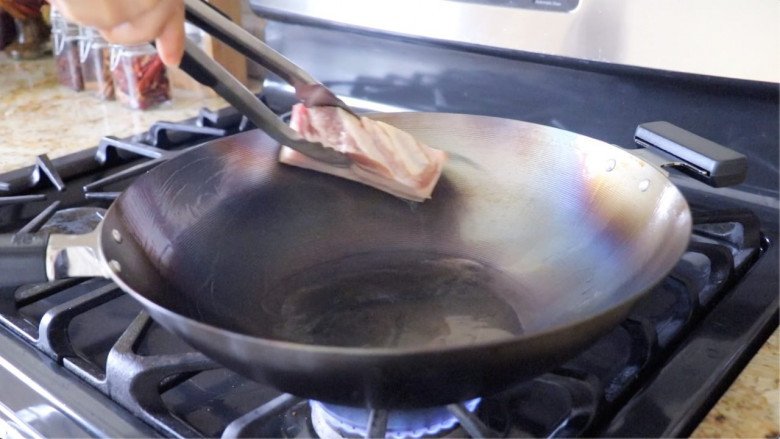

After 30 minutes, turn off the heat. The pork belly and oil will have darkened.
Wash the pan with warm water and a soft sponge, without using any detergent or dishwashing liquid at this point.
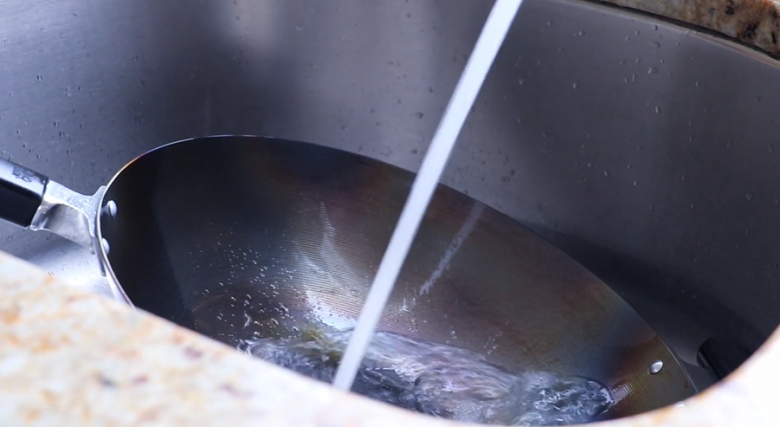
Place the pan on high heat and let it smoke. Then turn off the heat.
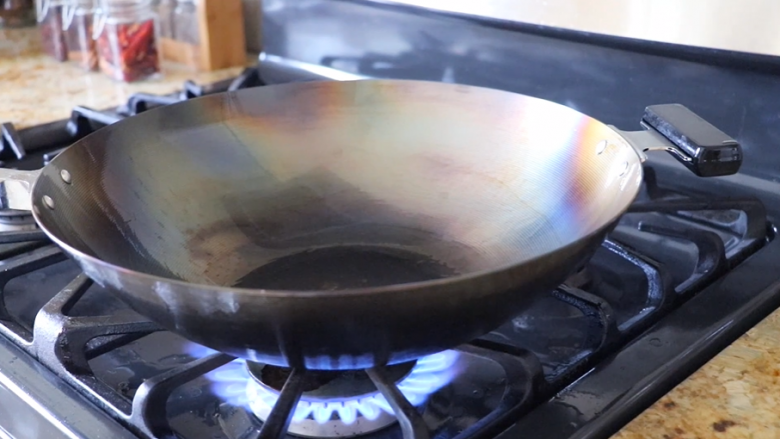
Dip the paper towel in canola oil and wipe the entire pan, including the bottom.
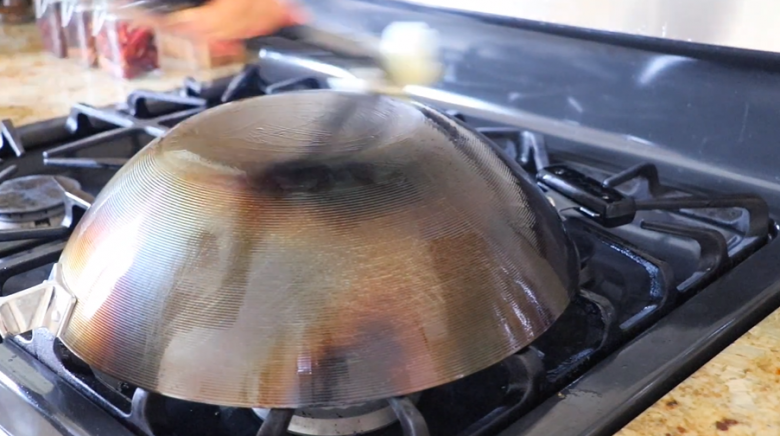
Your pan is now ready! This is a unique way of “seasoning” a cast iron pan to make it last longer, prevent sticking, and improve its cooking performance!
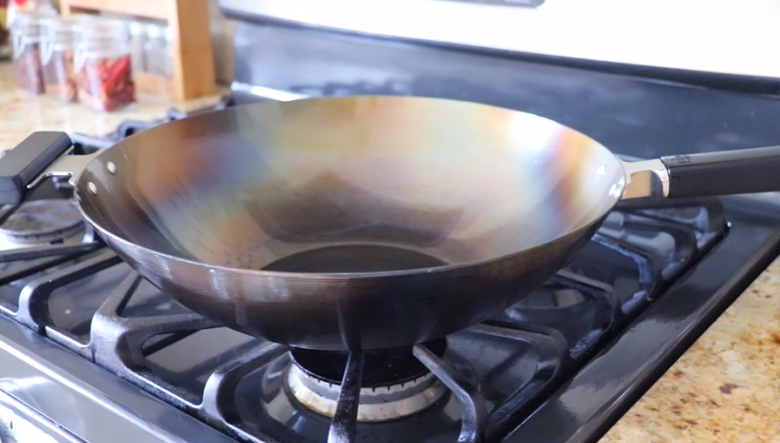
Good luck!
The Ultimate Guide to Braised Pork Belly: A Hearty and Flavorful Dish for a Cozy Rainy-Day Meal
The tantalizing flavors of braised pork belly have long been a staple in Vietnamese cuisine. This hearty dish, known as ‘thịt kho tàu’, is a flavorful masterpiece that deserves a place in your culinary repertoire. With its tender, melt-in-your-mouth meat and a rich, savory sauce, it’s a dish that demands attention. Today, we’ll guide you through the art of crafting this delicious delicacy, ensuring your taste buds embark on an unforgettable journey.
How to Make Delicious and Easy Bánh Bột Lọc with Shrimp and Pork at Home
Bánh bột lọc is a beloved dish, renowned for its robust flavor profile and generous use of familiar spices. The allure of this dish lies in its delicate balance of textures and flavors, captivating the palates of many. With a simple preparation using tapioca starch, this delectable treat is accessible to all, promising an irresistible culinary experience. Let’s embark on a journey to uncover the simplicity behind this exquisite delight.
The Ultimate Guide to Mouth-Watering Grilled Pork Noodle Delight: A Simple and Quick Recipe Sensation
“Bún thịt nướng is a traditional Vietnamese dish that has captured the hearts and taste buds of people across the country. With its origins dating back generations, this beloved dish has become a staple in the culinary repertoire of all three regions of Vietnam: North, Central, and South. It’s a true testament to the rich cultural heritage and diverse culinary landscape that Vietnam has to offer.”






































